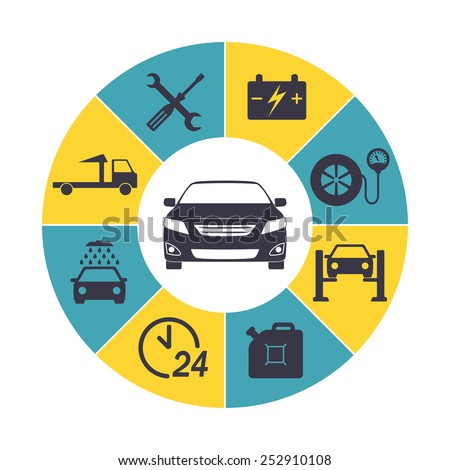Translating Your Vehicle'S Warning Indicators: What They Absolutely Represent
Translating Your Vehicle'S Warning Indicators: What They Absolutely Represent
Blog Article
Material Author-Termansen Torres
When you lag the wheel, those glowing warning lights on your control panel can be a bit complicated. Do you recognize what they're trying to inform you regarding your cars and truck's health and wellness? Recognizing the value of these lights is vital for your safety and the longevity of your vehicle. So, the following time among those lights appears, would not you wish to understand its message properly and take the required actions to address it?
Common Caution Lights and Interpretations
Determine usual caution lights in your auto and comprehend their definitions to make certain safe driving.
One of the most common warning lights consist of the check engine light, which indicates issues with the engine or discharges system. If this light comes on, it's important to have your lorry inspected immediately.
The oil pressure cautioning light shows low oil pressure, calling for immediate interest to stop engine damage.
A blinking battery light might suggest a damaged billing system, possibly leaving you stranded if not resolved.
https://www.carandbike.com/news/what-maintenance-your-car-needs-in-june-2836402 tracking system (TPMS) light notifies you to low tire stress, impacting car security and fuel efficiency. Disregarding this can cause harmful driving problems.
The abdominal muscle light suggests a problem with the anti-lock braking system, jeopardizing your capability to stop swiftly in emergencies.
Finally, the coolant temperature level advising light warns of engine overheating, which can result in severe damages otherwise settled quickly.
Comprehending these usual caution lights will certainly aid you attend to concerns promptly and preserve safe driving conditions.
Relevance of Prompt Interest
Recognizing the typical caution lights in your automobile is just the primary step; the value of promptly resolving these cautions can't be highlighted sufficient to ensure your safety and security when traveling.
When a caution light brightens on your control panel, it's your car's means of communicating a prospective issue that needs attention. Neglecting https://oil-change-places84062.loginblogin.com/38130395/do-you-find-yourself-captivated-by-the-misconceptions-related-to-auto-describing-check-out-the-realities-behind-these-false-impressions-and-uncover-the-benefits-of-specialist-describing-for-each-lorry-proprietor can cause a lot more serious troubles down the road, compromising your safety and potentially costing you much more in repairs.
Trigger interest to cautioning lights can protect against malfunctions and crashes. As an example, a flashing check engine light could suggest a misfire that, if left neglected, might cause damage to the catalytic converter. Addressing https://caidenoidwq.tkzblog.com/31089570/are-you-interested-concerning-locating-the-finest-vehicle-repair-shop-in-your-location-discover-the-top-10-tips-that-will-certainly-aid-you-in-making-an-educated-choice without delay can conserve you from a pricey repair service.
Similarly, a brake system advising light might indicate reduced brake liquid or used brake pads, crucial parts for your security when driving.
DIY Troubleshooting Tips
If you observe a warning light on your dashboard, there are a few do it yourself troubleshooting tips you can try prior to looking for professional assistance.
The initial step is to consult your car's guidebook to comprehend what the certain caution light shows. Often the problem can be as straightforward as a loosened gas cap causing the check engine light. Tightening the gas cap might settle the problem.
An additional usual concern is a reduced battery, which can cause different cautioning lights. Inspecting the battery links for corrosion and guaranteeing they're secure might fix the problem.
If a warning light continues, you can try resetting it by separating the auto's battery for a couple of mins and after that reconnecting it. Furthermore, examining your car's fluid degrees, such as oil, coolant, and brake liquid, can aid troubleshoot alerting lights related to these systems.
Verdict
In conclusion, understanding your automobile's warning lights is necessary for maintaining your automobile running efficiently and securely. By immediately resolving these informs and knowing what they imply, you can stay clear of pricey repair work and prospective failures.
Keep in mind to consult your auto's guidebook for certain details on each warning light and do something about it appropriately to make sure a trouble-free driving experience.
Keep educated, remain risk-free when driving!
